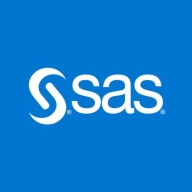

SAS Enterprise Miner and Dremio are competing in the data analytics and management space. SAS Enterprise Miner is noted for its strong analytics, while Dremio takes the lead with its scalable and modern approach to big data management.
Features: SAS Enterprise Miner provides advanced statistical algorithms, predictive modeling, and data mining techniques. Dremio offers data processing, seamless data transformation, and efficient query acceleration.
Room for Improvement: SAS Enterprise Miner can improve in flexibility, modern interface adaptation, and speeding up deployment. Dremio could enhance its deep analytics capabilities, broader statistical tool integration, and enrich its user community engagement.
Ease of Deployment and Customer Service: SAS Enterprise Miner's deployment is more traditional and complex but backed by strong support. Dremio offers a simple, cloud-friendly deployment with effective operations and helpful customer service.
Pricing and ROI: SAS Enterprise Miner has higher initial costs and hardware investment, causing a delayed ROI. Dremio offers flexible pricing with lower upfront costs, enabling quicker ROI through reduced deployment time and maintenance.

Dremio is a data analytics platform designed to simplify and expedite the data analysis process by enabling direct querying across multiple data sources without the need for data replication. This solution stands out due to its approach to data lake transformation, offering tools that allow users to access and query data stored in various formats and locations as if it were all in a single relational database.
At its core, Dremio facilitates a more streamlined data management experience. It integrates easily with existing data lakes, allowing organizations to continue using their storage of choice, such as AWS S3, Microsoft ADLS, or Hadoop, without data migration. Dremio supports SQL queries, which means it seamlessly integrates with familiar BI tools and data science frameworks, enhancing user accessibility and reducing the learning curve typically associated with adopting new data technologies.
What Are Dremio's Key Features?
What Benefits Should Users Expect?
When evaluating Dremio, potential users should look for feedback on its query performance, especially in environments with large and complex data sets. Reviews might highlight the efficiency gains from using Dremio’s data reflections and its ability to integrate with existing BI tools without significant changes to underlying data structures. Also, check how other users evaluate its ease of deployment and scalability, particularly in hybrid and cloud environments.
How is Dremio Implemented Across Different Industries?
Dremio is widely applicable across various industries, including finance, healthcare, and retail, where organizations benefit from rapid, on-demand access to large volumes of data spread across disparate systems. For instance, in healthcare, Dremio can be used to analyze patient outcomes across different data repositories, improving treatment strategies and operational efficiencies.
What About Dremio’s Pricing, Licensing, and Support?
Dremio offers a flexible pricing model that caters to different sizes and types of businesses, including a free community version for smaller teams and proof-of-concept projects. Their enterprise version is subscription-based, with pricing varying based on the deployment scale and support needs. Customer support is comprehensive, featuring dedicated assistance, online resources, and community support.
We monitor all Data Science Platforms reviews to prevent fraudulent reviews and keep review quality high. We do not post reviews by company employees or direct competitors. We validate each review for authenticity via cross-reference with LinkedIn, and personal follow-up with the reviewer when necessary.